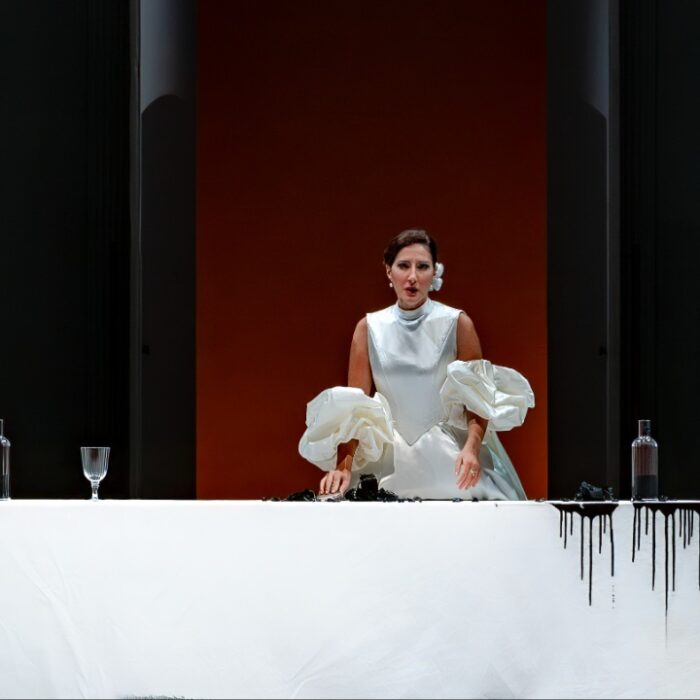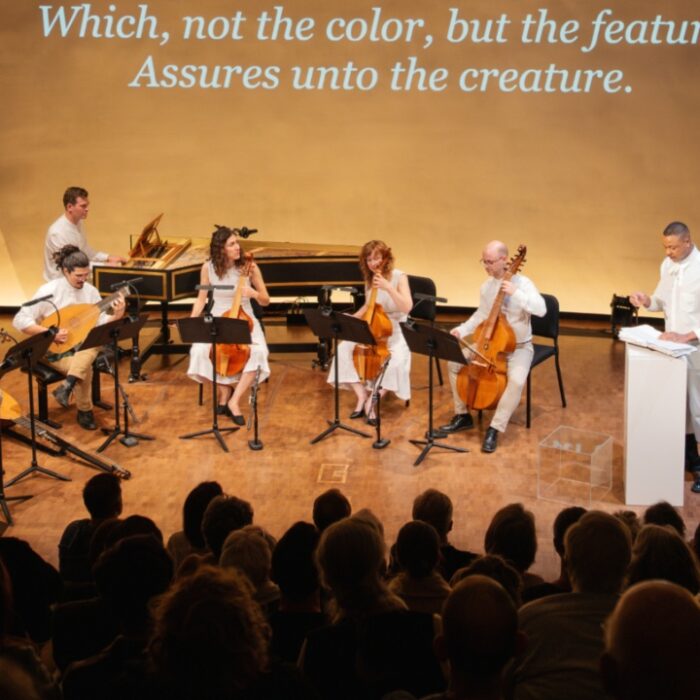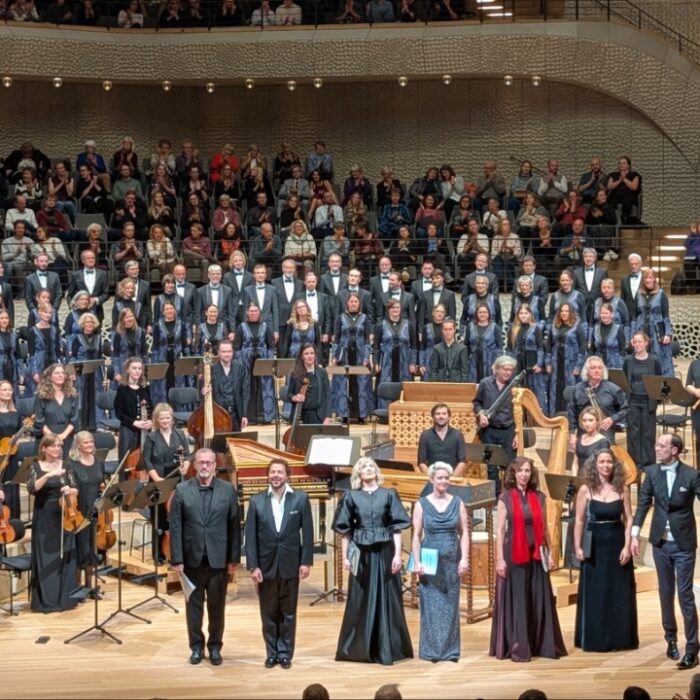
Metropolitan Opera 2018-19 Season Review: The Magic Flute
Spirited Performers Make for Impactful Season Premiere
By Logan MartellOn December 19, 2018, The Metropolitan Opera premiered this season’s run of Mozart’s musical drama “The Magic Flute.”
This production by Julie Taymor is notable for its English translation, abridged running time, and opulent presentation; these features concentrated the drama and allegorical meaning which would unfold in the hands of the company’s cast of artists.
Squaring the Circle
Taymor’s production of “The Magic Flute” is an elaborate spectacle of symbolism which brings out the most out of the Masonic allegory found within the opera. Nearly all the scenes unfold between two pillars representing those of Solomon’s Temple, Boaz and Jachin; this neatly frames the unfolding drama between the extremes of severity and mercy and suggests the journey as an integration of these extremes into a spiritual balance.
While most of the symbolism within the set is of an Egyptian origin, one notable exception came in the massive Sri Yantra that made up the background of Sarastro’s temple. This tantric symbol depicted the universe and its creation through the interplay of masculine and feminine powers, a theme which this opera greatly partakes in, and is most clearly seen by its cast where each character has a partner of the other sex.
Another symbolic highlight came when Papageno struggled over whether or not marriage was worth the risk of dying through his trials; the doorway they entered from was a circle inside a triangle inside of a square, which is a symbol of trying to solve an impossible task, such as squaring a circle. Seeing Papageno try to flee and run up the circle like a hamster on a wheel was humorous in a way that was not highbrow so much as it was esoteric.
Making the Magic
As Tamino, tenor Ben Bliss captured the development of the character as he matures from headstrong to heroic. In earlier scenes, this was made apparent through his impatient, almost frantic energy which saw him either snapping into a combat stance, or swooning over the prospect of Pamina’s love.
His aria “Dies Bildniss ist bezaubernd schon,” contained a tender passion that compensated the shortened nature of the number, as heard by his delivery of the phrase “Is it love I feel? …If so, to true love I yield!” The emotion of Bliss’ recitative before the aria “Wie stark ist nicht dein Zauberton,” made for a nearly-seamless transition between speech and song.
Soprano Erin Morley often made a captivating figure in the role of Pamina. When interacting with figures of authority, such as the Queen of the Night and Sarastro, Morley’s pleading had an adolescent quality that, while somewhat artificial, was still appropriate for the child and family-oriented production. While the abridged nature of the version cut numbers such as “Bei Mannern, welche Liebe fuhlen,” when Morley did sing, it felt like a blossoming from the character’s temerity to a sonorous maturity. This was heard in her defiant vocal climax before fainting in the clutches of Monostatos, as well as her transition to her dejected aria “Ach, ich fuhls, es ist verscwunden.” Morley navigated through the phrases with a sorrowful delicacy, even as the orchestra, under Harry Bicket, slowed to emphasize her sustaining lyricism. For this, Morley drew tremendous applause which did not wait for the orchestra to finish the closing measures.
Nathan Gunn’s Papageno made for a delightful foil; through the night he was physically dynamic, yet Gunn retained the vocal support which made his singing as colorful and convincing as his acting. A prominent example of this came during his rescue of Pamina, where Gunn arrived after climbing down a ladder and maintaining a stability of tone.
His comedic sensibility brought no shortage of laughter, with lines such as his recurring boast of strength, “Take a look at these hands,” and before being apprehended by Sarastro’s guards, “I know! Let’s save ourselves by lying!” His crestfallen, almost pouty, demeanor after losing Papagena shockingly contrasted his line “I will decorate this tree with the hanging corpse of me.” This grim levity made for a fun transition to their duet “Pa pa pa.”
As Papagena, Ashley Emerson was consistently charming through her appearances. Hobbled and hiding her face with an owl-like mask, Emerson’s portrayal of age drew laughs when, after being invited to sit down with Papageno, a series of enthusiastic mumbling was broken by a single “okay!” Her duet with Gunn gave her the chance to burst from her disguise and into a ray of youthful loveliness as she energetically circled about her partner. While Emerson’s time on stage was brief due to the abridged production, her joyful soprano helped her to quickly seize the audience’s affections.
Commanding Colors
Kathryn Lewek’s Queen of the Night was a fearsome specter of sounds. After a stormy entrance, she came garbed in white to deliver a cloying aria to Tamino; Lewek elicited much sympathy with her account of losing Pamina, woefully sustaining the word “save” in the phrase “I tried to save her” at the highest reaches of her voice. After securing Tamino’s services, a beat from the orchestra saw Lewek sharply pivot in mood while turning to make a highly-successful exit.
Her rendition of the act 2 aria “Der Holle Rache kocht in meinem Herzen” was electrifying due to Lewek’s malevolent coloratura full of skillful vocal runs and sharp, high F’s. Physically her demeanor had a poise that suggested regality, but her gestures and the positioning of her arms felt reminiscent of Baphomet depicting the esoteric maxim “as above so below.” For such offensive grace, Lewek earned the extended applause that followed.
In the role of Sarastro, Morris Robinson’s authority was made clear not only through his imposing figure, but for the sheer arresting gravity of his bass. Robinson possesses a Wagnerian strength of projection which, when coupled with his earthy timbre and the smooth, flowing contours of Sarastro’s vocal lines, made his singing feel like the rolling of a muddy river.
His demeanor was mostly implacable throughout the evening, the only thing that seemed to draw anger from him was the hellish passion of the Queen of the Night who had just finished her famous aria. His aria “In diesen heil’gen Hallen,” felt as if he were trying to undo the emotional damage done upon Pamina by filling the air with calm stability, and the repetitions of his closing phrases were successively deeper, as if trying to pull her away from the fear caused by Lewek’s violent vocal heights.
The Three Ladies were played by Gabriella Reyes, Emily D’Angelo, and Maria Zifchak. Their playful bickering over Tamino came as an early source of humor, and their lines were delivered clearly and gaily. As mostly-unseen agents of darkness, it was fitting that they were depicted as owls through their costumes, which featured detachable heads; during moments when these heads were carried about by extras to give the impression of swooping and surrounding, the pointed caps atop the ladies’ heads gave them the silhouette of a crayon. Their antagonizing of Papageno was as entertaining as it was short-lived, and their form as owls added a surprising amount of meaning to their interactions with the bird-catcher.
The Three Spirits, Julian Fertel, Eliot Flowers, and N. Casey Schopflocher bore a tranquil, almost detached wisdom in aiding Tamino and Papageno’s journey. This was seen in how they passively traveled about on the backs of flying birds, and heard in their gentle, relaxed delivery of their lines. While they were audible through most of their appearances, their exhortation of “Enough! Enough! Enough!” when stopping Papageno from hanging himself ended up being washed over by the orchestra.
This production of “The Magic Flute” bills itself as one for families and children, and Taymor’s production succeeds in not only cleaning most of the grittiness from the work, but covering in holiday wrapping paper layer upon layer of symbolic and dramatic meaning.
As visually spectacular and substantial as this production is, what truly made the night was its stellar cast, with each member feeling utterly appropriate for their part. Audience of all ages will undoubtedly find much to enjoy from this ambitious yet rewarding production of one of Mozart’s most meaningful operas.


